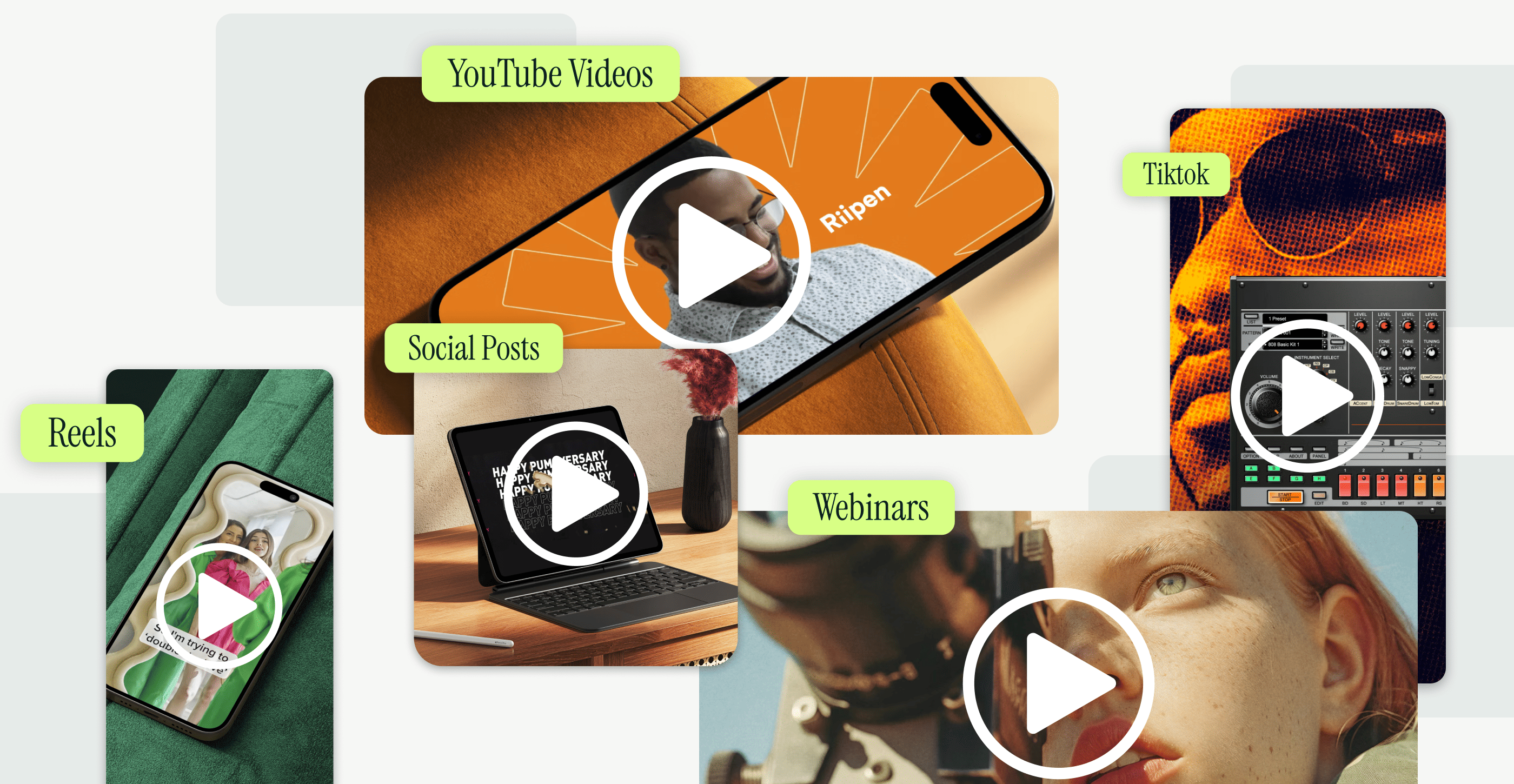
It’s 2023. We’ve been saying this all of last year, but we’re going to keep saying it this year once more: content is king.
You might have the most attractive product or service on the market, but if you’re not talking about it, nobody else is either.
As part of our Momentum Summit, we got some of the smartest content marketers working right now in the same room to share their insights on what brands can do to boost their buyer journey.
Joining us for the discussion were:
- Nolan McCoy, Head of Video & Creative Content at Chili Piper
- Allie Decker, Co-founder & Head of Content at Omniscient Digital
- Pat Lynch, Director of Content at D2L
Along with our own resident head of content and community, Cassandra King, these four experts took a deep dive into what brands need to focus on to boost their content marketing skills and performance.
If you want to see the full presentation, you can find it right here.
Let’s get into the five tips that can help you boost your content marketing performance.
Tip #1: The Buyer Journey Is Not Linear
There’s the classic idea of a buyer journey, usually dissected into a funnel with a top, middle and bottom. Within that construct, there are the four stages of a buyer’s journey:
- Awareness
- Consideration
- Conversion
- Retention
In reality, this is often not the case. People are messy; they’re not going to align with your ideal sales journey. Instead, they’re going to poke around, find their own path and then make their own mind up about your brand, usually after changing their mind a few times first.
If you’ve ever gone into your Hubspot contact records or even looked at your Google Analytics, you’ll realize quite quickly that people are curious, and sometimes chaotic.
As Cassandra explains in our session:
“You need to be holistic in your approach. Your content gaps may not be that obvious through data alone. Just because you can’t fully measure it doesn’t mean you shouldn’t create it.”
In other words, to give your buyer journey the highest chance of success, try not to be overly linear in how you produce content. If you don’t think your content idea fits into your traditional funnel, that’s fine! If it’s good content, people will read it.
Instead of a straight line, a content journey often ends up looking something like this.
Sure, you should absolutely have intro videos and accessible content to build brand awareness, but don’t assume that every potential buyer will see these or even know they exist.
Create a framework where your brand’s top qualities and unique selling points are ever-present, allowing any buyer who steps onto your website or platform to know exactly who you are and what you offer. This holistic approach will allow you to create a more cohesive impression to all your potential buyers, regardless of their stage on the buyer journey.
Finally, don’t be afraid to experiment with your content. Just because you can’t measure the results of something doesn’t mean you shouldn’t do it. Sometimes it’s best to just mess around, experiment and trust your content marketing instincts to provide the content your buyers desire.
But what if you’re not sure what your platform needs content-wise? Well, tip #2 is for you.
Tip# 2: Lean on the Expertise of Thought Leaders
One of our speakers, Pat Lynch, had a lot to say about this:
“This is super important to me, especially coming from a journalistic background. If you’re looking to build credibility with your target audience, then you have to tap into the experts and let them do the talking.”
Take the time to understand who the real masters are in your industry and listen to what they have to say. If your company works with a lot of customers and external experts, get them to do the talking. Reach out to your customers and ask them what they have to say about your product.
Not only does this present trust and confidence in your business from external sources, but it also gives you a golden insight into your own company and what you’re doing right (and what you’re doing wrong).
Pat also explained that:
“At D2L, we also hired academics to help us inform product positioning, and we use them as much as possible. It’s a really effective way to build credibility and to demonstrate subject expertise within your content.”
While working at Hubspot, our speaker Allie added an extra level to this:
“While formulating our content strategy, I realized the best experience was from internal teams. Instead of referencing external publications or third-party blogs, I went right to the source with our internal teams. All these real quotes and real knowledge not only added something new to the conversation but also highlighted Hubspot as an employer brand.”
By creating a framework that ensures you are sharing and celebrating your SMEs, you can create content that provides value while also presenting your company as a thought leader.
Overall, your content should present a sense of reliability and expertise. Your buyers should see your content and immediately know that you are a reputable and industry-leading source in your industry. Most importantly, you can’t be the only voice providing the expertise: look internally and externally to find the experts that are willing to share their knowledge with you.
However, let’s say you have a long list of subject matter experts, what’s the most effective way of sharing that content?
Tip #3: Video Marketing is Your Friend
2022 was the year when video not only took center stage, but took over the whole show and left the rest of the cast sitting in the background.
2023 is going to be even more video-marketing-centric, and you need to capitalize on this. As part of this video-centric marketing strategy, you should also focus on storytelling. TikTok, the current reigning emperor of social media platforms, recently explained to us that storytelling is going to be a key feature of their content platform in 2023. What this means is that story is everything, and quality is secondary.
Our speaker Nolan McCoy provided this key message:
“So many companies are terrified of starting a video marketing strategy without a full department of video production experts. This is a huge mistake.
Pretty much all of us have a high-spec camera sitting in our pockets or on our desks right now. Your phone is all you need to get started with your video marketing campaign.”
Think about it: when you’re watching a video or advertisement, are you thinking about the quality of production, or the quality of the story?
In fact, high-quality video production can actually be a deterrent in video advertising because viewers immediately know they’re not watching organic content but a paid promotion. Keep things organic, and try to create an aesthetic that feels user generated and sincere.
If you have a good idea or, even better, a great thought leader speaking on a topic, it doesn’t matter if it’s taken from a Zoom video or filmed on your phone camera, as long as the content is worth watching.
Now you have the best available person speaking on a topic in the best available medium: where do you share it?
Tip #4: Invest in Community, It’s Your Connective Tissue
We at Superside are strong believers in community. We like to think of it as unselfish marketing. If you provide a community that offers expert advice, insight and interviews, you’re going to see people populate that platform for their own benefit, not yours.
Our speaker Pat Lynch explains:
“Your content should be useful and valuable, not just another sales pitch. At D2L, we’re building a community that is intentionally product agnostic and only provides industry knowledge and expertise”
Cassandra added to this, saying that the most important thing in building your community is sincerity:
“If you put on a fake face, people will notice straight away. Be unselfish in your marketing, and provide as much value as you can to your community: it’ll pay you back in the long run.”
By creating an open, knowledge-centric community, you can create an active hub from your target market that is reading your content and absorbing what you have to say. This means that when they or their business requires a service that you provide, your company is the first that they think of. It is one of the most effective methods of developing brand awareness and reliability.
Additionally, creating a strong and vibrant community is also an excellent way to learn more about your business and the industry as a whole. If you can manage to get your target audience into the same virtual room, you can understand exactly what their pain points are and how your company can solve them.
In 2023, online communities are a highly malleable thing. Social media platforms are floundering with changes to user behavior and, in some cases, misguided smart bets. Your content marketing strategy should capitalize on this, creating a platform where your target audience feels listened to and surrounded by individuals whom they can connect to and learn from.
So now you have the content, the platform and the medium, but what about the strategy? How do you maintain this momentum with your content?
Tip #5 Repurpose, Repurpose, Repurpose
A solid content marketing strategy is not just about quality content, it’s also about consistency. You might create the world’s greatest TikTok video, but if you spend six months doing it, you’re going to lose momentum, and your customers won’t be paying attention.
The easiest way of tackling this is by repurposing your content. This doesn’t mean just reposting or adding a new polish to the content you’ve already created, it’s about finding another way to present a story or idea. Let’s say you’ve spent months organizing an event. You had some top-level industry speakers, you recorded the whole thing and you even posted some snippets on social media. This is a great start to your content marketing strategy, but there is so much more you can do with that content.
Email marketing, blog articles, tweets, “Top 5” videos: these are just some of the things you can do to capitalize on this content.
However, in approaching repurposed content, don’t just think, “what new medium can I use to share this?” Instead, focus on the core message and the best possible way of sharing that with your audience.
Once you understand the core message of what you want to convey to your audience, you can look at your content in a new light. This also allows you to create a more cohesive content planning structure for yourself, saving you and your team plenty of time and resources.
Final Word of Wisdom: Don’t Work in Silos
Nolan concluded on this:
“All content marketers are storytellers in one form or another, but most of the time people think that this skill only applies to external marketing. But the reality is you need to be as good of a marketer internally as you are externally. Just as much as you’re trying to get buy-in from prospects, you’re also trying to get buy-in cross-functionally on a million other projects. Aligning and empowering internal stakeholders requires just as much, if not more, detail and intentionality because internally you’re working with people who live and breathe this stuff”
All of our panel were in full agreement on this topic, especially if your company is fully or partially remote. You need to speak with all of the stakeholders within your company to see what content they are using, enjoying and learning from. There is zero point in your content marketing team working in a silo, creating content that has absolutely no benefit to your sales or wider teams.
Allie also realized that this was a huge benefit to their content creation workflow structure:
“I plugged myself into nearly every Slack channel led by the Product, Sales and Dev teams. They’d sometimes share a win, and I’d think, “Hold on—let's write something about that.” This method was great for brainstorming brand and product-related stories.”
Finally, working more collaboratively allows you to turn any member of your company into a content creator. Not only does this ease your workload, but it also diversifies your content creation process.
Diversifying the faces that present your company to your audience can be a huge win. If you have product managers discussing mid-level content and salespeople discussing bottom-level ideas, you create a far more invested buy-in from your audience.
This is just the tip of the content marketing iceberg of the conversation these industry leaders had. If you’d like to watch the whole half-hour session (along with all the other sessions from our event), you can find it on our Momentum Summit page.
















